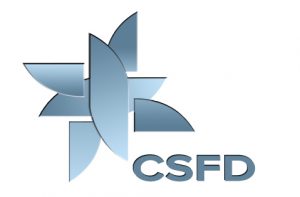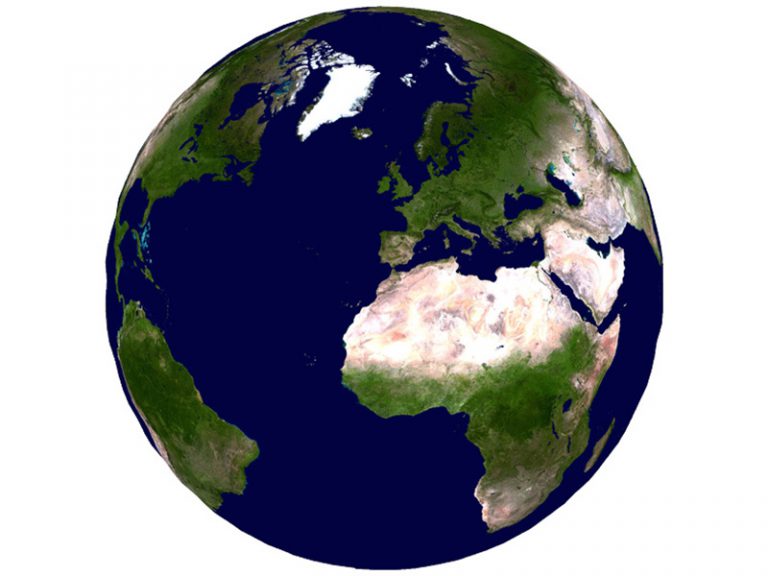A tool to monitor and assess desertification
Remote sensing, a tool to monitor and assess desertification
Remote sensing is a powerful tool to implement early warning systems, and to help policy- and decision-makers define relevant strategies for sustainable development. Indeed, satellites allow to observe the Earth and cover at a reasonable cost very large expanses in a repeated, homogeneous and systematic way, which cannot be done on site. Today, a wide range of high, medium and low resolution satellites enable to monitor our environment, to make comparisons in time and space, and to model how ecosystems work. Within the scope of the combat against desertification, remote sensing allows to follow-up and monitor risk areas in the long term, to determine desertification factors, to support decision-makers in defining relevant measures of environmental management, and to assess their impacts.
A remote sensing system does not generate directly usable information. It is first and foremost a tool for data production. The art of remote sensing consists in converting physical measurements of surfaces into useful information. Such data must be analysed together with other data sources (field data, socio-economic data, etc…) in order to derive understandable information likely to be integrated into information and decision support systems (Geographic Information Systems).
Remote sensing: both a science and a technology
Remote sensing is defined as “all the knowledge and techniques used to determine the physical and biological characteristics of an object by measuring it without physical contact with it”
From Journal Officiel, December 11th, 1980 (Bulletin of official announcements issued by the French Republic)
Remote sensing to help combat desertification
Desertification factors are natural (climate) and human-induced (overgrazing, logging, unsuitable farming methods). In order to assess the degree or possible risks of desertification in a given area, such factors are associated with indicators that allow to warn and help local or national authorities in undertaking relevant actions of environmental management. Two major desertification indicators are easily monitored thanks to space-based remote sensing: (i) vegetation cover and (ii) composition changes in sand surfaces and wind transportation. Remote sensing is used to estimate this type of desertification indicators through remotely sensed “derived variables” (soil moisture, biomass…).
Satellite-based monitoring should take into account the ecological features of the environments followed-up and rely on the knowledge of local processes. This is the necessary condition for being able to identify the status of an area and to interpret changes in surface states along time: environmental degradation, stability or restoration. Thanks to the increasing number of satellites and sensors, denser and more diverse information are collected from space.
The current challenge then consists in using them at best to obtain an accurate monitoring at the lowest cost, thus feeding early warning systems, which are the actual concern of the managers of the regions affected.
Example of application: Monitoring of a sandy steppe area
The Menzel Habib area in pre-Saharan Tunisia was affected by particularly severe desertification phenomena during the 80’s, which were countered through a programme aimed at combating land degradation and sand invasion. Experiments of space-based monitoring and studies on long-term ecological indicators were led in this region. This site indeed belongs to the observatories of the ROSELT (Long-Term Ecological Monitoring Observatories Network) programme.
Observing remotely sensed image series makes it possible to design a sequence of the various surface states. Analyses should bear on long enough series (23 years in this area, i.e. 1976-1999) to derive trend syntheses. This monitoring concerned surface states (brightness and colour indices) rather than biomass, much too poor for its variations to be easily detectable. Each picture was classified according to a simple legend based on soil type and vegetation cover density. The percentage covered by each category was monitored over time so as to determine environmental evolution (stability, degradation or improvement).
The figure below illustrates a synthesis obtained by analysing trends observed in images classified over five dates (1989 to 1999) and related to sand-invaded surfaces (unfixed moving sand, dunes, etc…). Sand-invaded areas actually decreased in favour of fixed sand areas and farming lands. The efforts undertaken in order to fix the moving sand that had invaded the region during the previous decade were successful. Space-based monitoring allowed to quantify this impact over large expanses, which was of course also observed locally on site.


